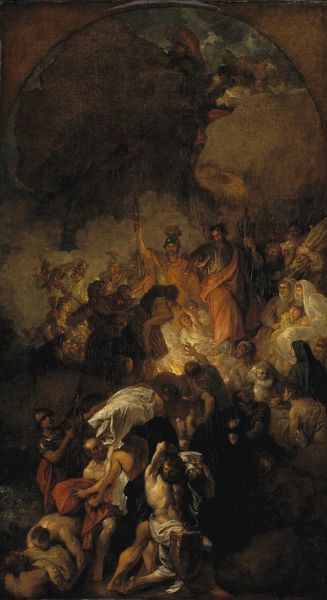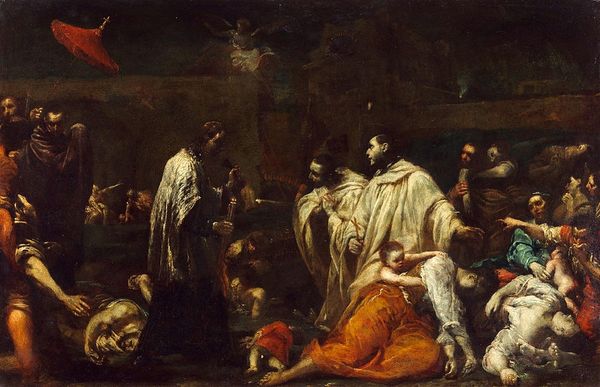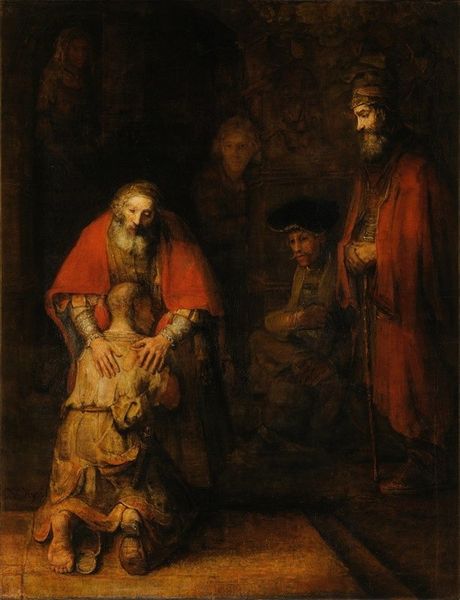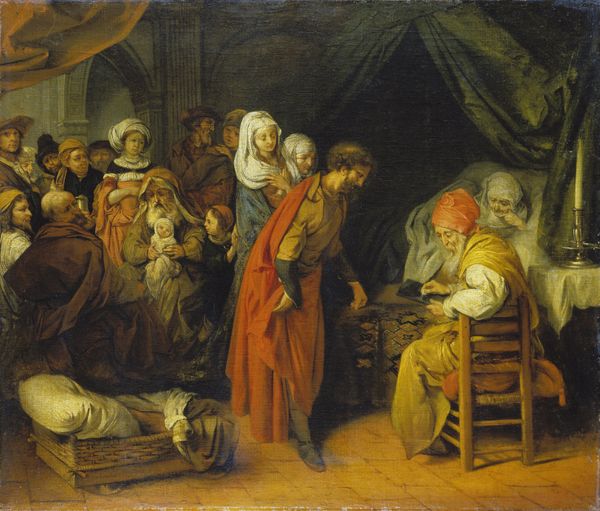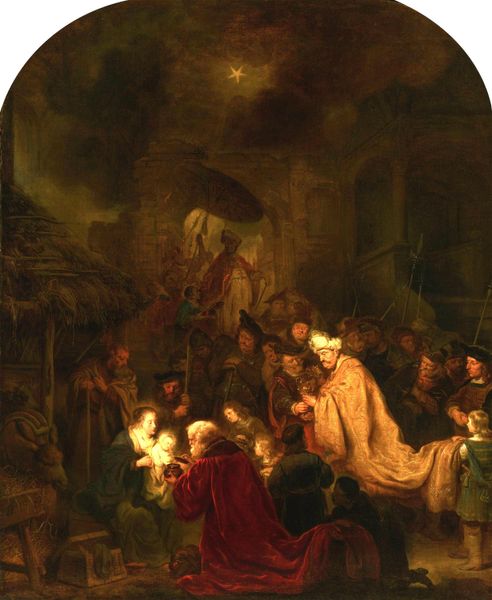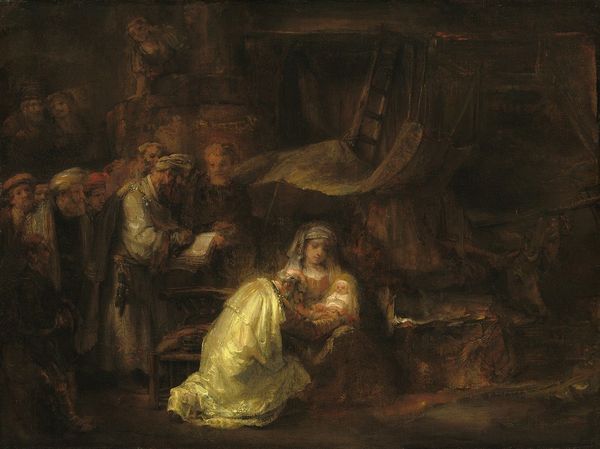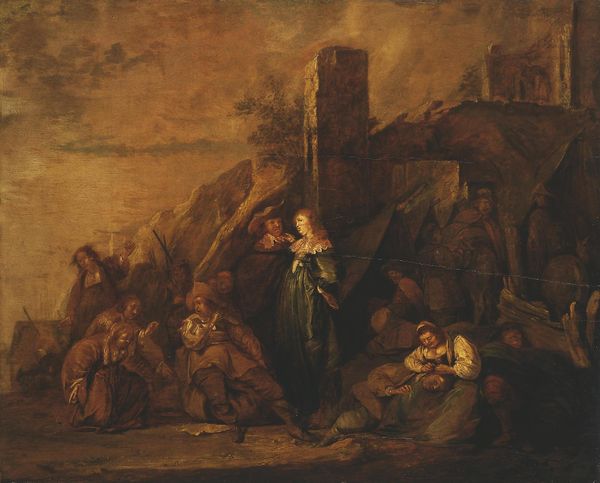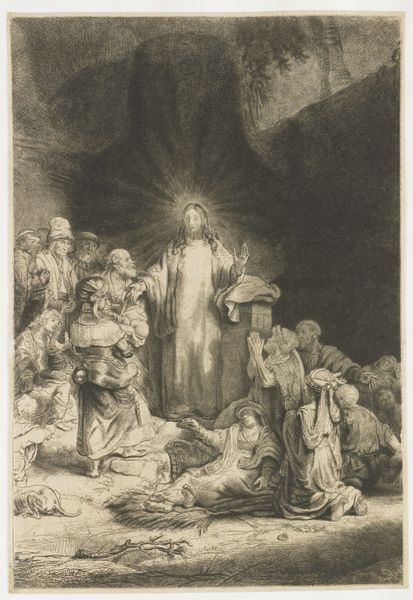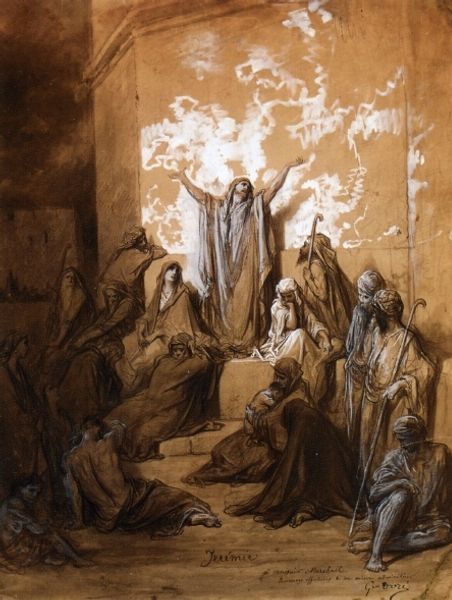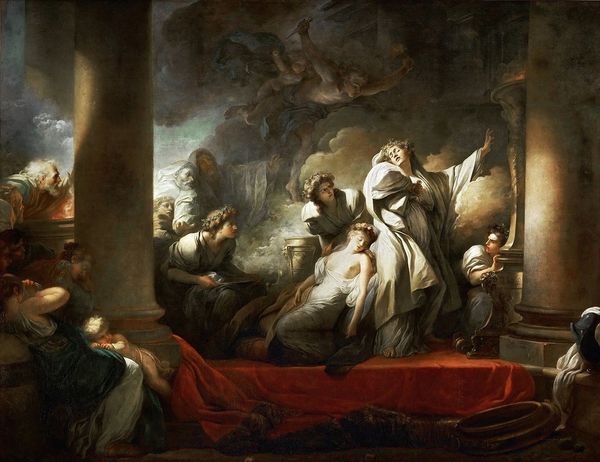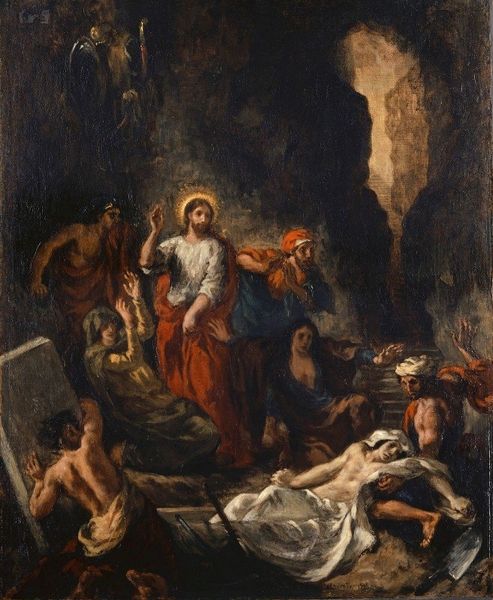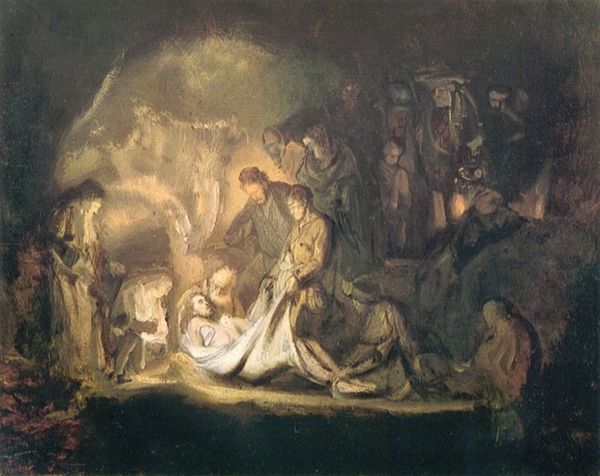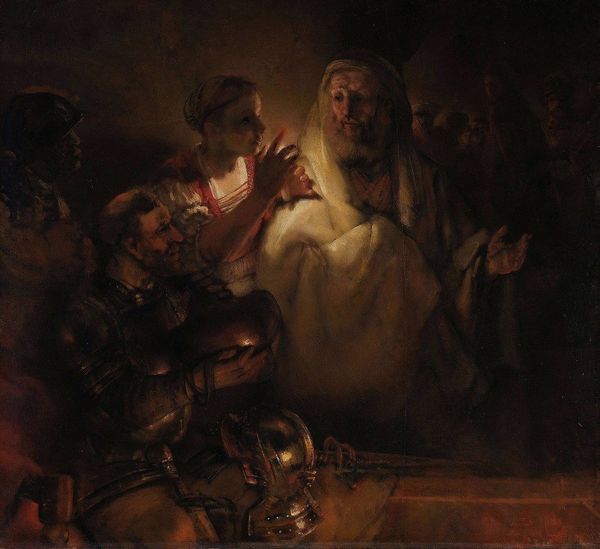
Adoration of the magi 1632
0:00
0:00
rembrandtvanrijn
Gothenburg Museum of Art, Gothenburg, Sweden, Hermitage Museum, Saint Petersburg, Russia
painting, oil-paint
#
narrative-art
#
baroque
#
dutch-golden-age
#
painting
#
oil-paint
#
figuration
#
oil painting
#
history-painting
#
realism
Dimensions: 45 x 39 cm
Copyright: Public domain
Curator: Rembrandt van Rijn's oil on canvas from 1632, titled *Adoration of the Magi*. What's your initial take on it? Editor: It feels immediately intimate, despite the crowd of figures present. Almost like peering into a very private moment made accessible to the public. A strong sense of witnessing a ritual. Curator: That's interesting because Rembrandt is indeed working within an established iconography. Consider the symbolic weight carried by the Magi themselves, representatives of different continents and ages kneeling before the infant Christ. Editor: The very idea of these powerful men, presumably wealthy rulers or scholars, humbling themselves before a newborn… It challenges notions of power as strictly masculine or inherently tied to material wealth. Also interesting how each one is styled according to their own supposed ethnicity; for all of its universalising aims, such pieces carry many reminders of the social biases that still affected art at that time. Curator: Precisely. These figures embody the idea of the Church as universal, open to all people. It echoes earlier artistic traditions depicting this biblical scene but is re-emphasised within the Dutch Golden Age—which coincides with intense mercantile exchanges on a global scale. Consider how such iconography speaks of a type of "soft" power: the capacity of religious faith to mediate social hierarchies. Editor: This particular reading casts shadow on aspects, too, though. The dark setting gives it an uncanny feel, amplifying both the humanity and also the implicit tensions between these worlds converging in a small stable, underscoring the potential for inequality inherent in seemingly celebratory displays of authority. What also resonates for me is this question about what the image of offering says about power relations. How far is a scene such as this capable of legitimating imperial power dynamics, especially to the subjugated and colonised? Curator: That is astute. One can see such artwork operating on multiple registers. As image, and powerful story, how would it address that concern over longer time spans, from then to today? Editor: Perhaps art can only ask, rather than answer these sorts of issues. For myself, I read it as a conversation piece to start from... And the longer I look, the more of a mystery the scene becomes. Curator: It is as the best symbolic art should always be; both an ending and beginning in thought, history and human value systems. Thank you for these interesting remarks!
Comments
No comments
Be the first to comment and join the conversation on the ultimate creative platform.
